In my hands now is Paul D. Miller’s latest project, the Book of Ice, a collage-work of manifestos, stories, photographs and texts on the southernmost point of this planet, that ice-bound and all-but uninhabited pole, Antarctica. This is something of an artist’s book, a kind of anti-book that collects exappropriated objects from elsewhere. In this context, by exappropriated I mean an act that samples without stealing, that takes part without taking away from the whole. So, like all of DJ Spooky’s work, images of Amundsen and Scott’s voyages are sampled much the same way that Spooky remixed D.W. Griffith’s founding racist myth of US history in Rebirth of a Nation. Though details of Antarctica’s history, discovery and exploration are provided, this beautifully designed and illustrated hardcover from Mark Batty Publishers is much more a meditation on ice through the sampling of Antarctica’s recorded history alongside Spooky’s exploration of design imagery in the melting/consumption of Antarctica.
The Book of Ice includes “Osmotic Strategy Machine—The (Flawed) Unfolding of Afrofuturism,” an interview I conducted with Paul for my forthcoming edited volume on Afrofuturism (Wayne State UP). The version presented here is somewhat staccato, but to the point through its brevity (the volume will include a remixed exchange and sampladelic text). This interview presents insightful reading, as it is one of the few times in which Paul has openly reflected upon his involvement with the 1990s email list and website Afrofuturism.net, as well as situating his interpretation of Afrofuturism within historical, political and aesthetic contexts. I believe Paul includes this interview as part of the ethos explored elsewhere in the Book of Ice, where he talks about “thawing-out” the cold muthafucka’ aspects of black ice, as well as warming up the ice-cold brittleness of stark whiteness. Paul continues to forge a global aesthetic of remix culture that melts the divisions of colour, and in this respect, Paul remains an exemplary Afrofuturist—whatever he might say otherwise. Paul Miller is remarkable for creating bridges between disparate cultures, and in The Book of Ice Paul puts into perspective the greater forces at work in the melting of Antarctic ice, reminding us that the collapse of our polar regions also calls for the thawing of cold hearts and cultural antagonisms. We are like penguins caught in the flow of the impending great melt, and to move outwards, upward to the stars, we need to begin with swimming together through the thaw….
In 2008, Paul Miller spent four weeks in Antarctica, conducting sound recordings for his compositional work Terra Nova: Sinfonia Antarctica. It is unfortunate that this book does not include a DVD of the multimedia work (understandably, it was probably not cost feasible for a book already colour printed on quality stock). Miller’s first book for MIT Press, Rhythm Science, included a CD mix which reflected his ideas through his DJ mix—I wrote a lengthy treatise on that book over on EBR. In any case, as Terra Nova is a full-fledged multimedia work that interrelates many of the cold concepts explored in The Book of Ice, here’s an insight:
What I like about The Book of Ice is how it rethinks what this cold space could be otherwise—a place, perhaps, of unclaimed exodus. What then, when it melts? When its resources will undoubtedly become exploited by competing interests, corporate and nation-state? Miller explores the dream of a “People’s Republic of Antarctica” through a series of campaign posters that alternate between early 20th century revolutionary modernism and monochromatic symbolism awash in blue penguins. The print posters call for a manifesto of Antarctica in different languages and national iconographies, from the Arabic half moon to the Chinese Communist red star.
The compositional method of Terra Nova is also explored here with a visualization of the score. Miller turns the elements of traditional sheet music into bubbles of chaos complexity, with the notation juxtaposed and carved into circular objects, as if spattered with the geometric shapes of water droplets from Antarctica’s melting ice caps.
Questions of climate change arise throughout the text, as Miller explores the economic, emotional and data landscapes of Antarctica through cartographic mappings of ice flows to dataflows. Aspects of this territorial mapping are reminiscent of Situationist détournement. Along this line, the visual icons of sell-by capitalism are explored in the juxtaposition of consumer-packaging barcodes and the increasingly ubiquitous QR squares with various linguistic scripts. Implicit among these image mixes is Miller’s interrogation of “hyperconsumerism:” is Antarctica for sale? If it can be mapped, can it be scanned and sold?
The closing section of the book is filled with full-bleed, full-colour images from expeditions mapping the great unknown ice, with double-page spreads of mountains and icebergs, explorers in ice-encrusted parkas and numerous penguins. Black-and-white imagery is contrasted with the subtle blues and grays of monochromatic colour. Night photography of modern research stations revels in the similitude between the neon-lit lighting of science and the southern aurora borealis.
Yet why this obsession with Antarctica? As Miller writes, ever playing the trickster, ice resonates with black culture. As Paul puts it,
Black culture loves ice. We name ourselves after it: Ice-berg Slim, Ice-T, Ice Cube. . . . So, yeah, there’s a long history in black culture of being a “cold muthafucka.” It’s about being a “frigid” person: the ice grill, bling bling, bounce off the light of diamonds in your teeth. Yeah, that’s ice (Book of Ice 10).
If urban black culture tends toward ice, then DJ Spooky aims to thaw it out with sinfonic soundwaves capable of collapsing cultural ice into global flows. If climate change is melting Antarctica, then the melting of ice presents an intersection between the geosphere and the sonosphere, between the axes of black and white ice, cityscape and icescape. Two compositional tools guided Spooky’s process in creating the Terra Nova sinfonia: repetition, on the one channel, and R. Murray Schaefer’s soundscape, on the other.
My concern here is how do we make music out of it, how do we thaw the process, thaw people out, and see the paradox of hyperconsumerism that this kind of stuff celebrates, while at the same time tying the conceptual issues of sound and contemporary art. It’s a Sisphyean task, but considering there’s not much more going on this planet than the ecosystem, I thought it was a worthwhile one. Hip-hop is always considered the soundtrack of the city’s geometric landscape. The grid of most American cities carries what I like to call an “orthogonal” logic. I wanted to take the “urban” concept of repetition and apply it to a different landscape, and see what would pop out of the collision. After all, music is patterns. And so is landscape. The common denominator here is pattern recognition.
And that’s what brings me to Antarctica (Book of Ice 10).
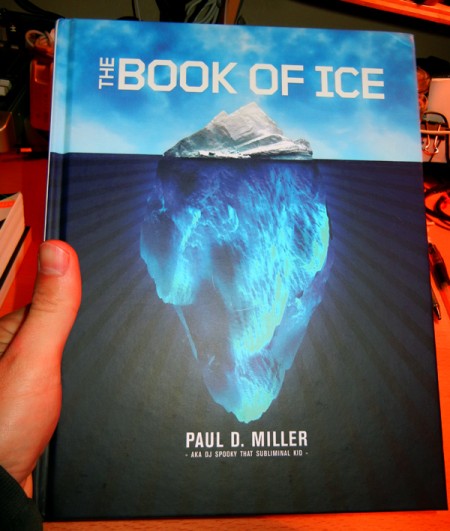
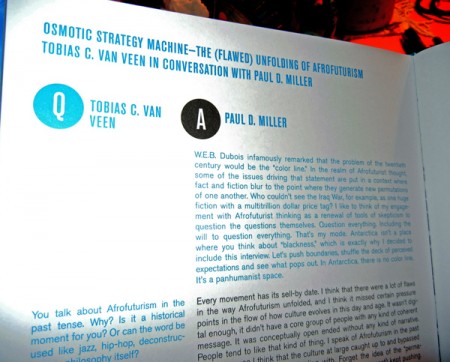
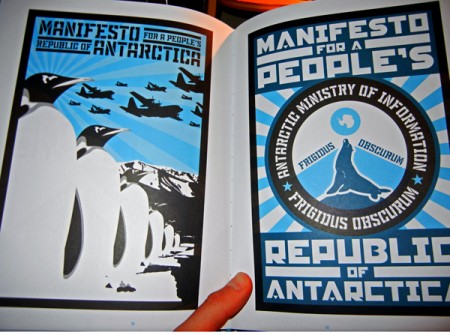
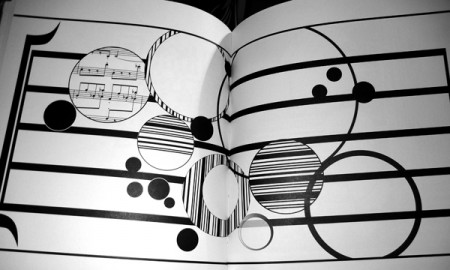

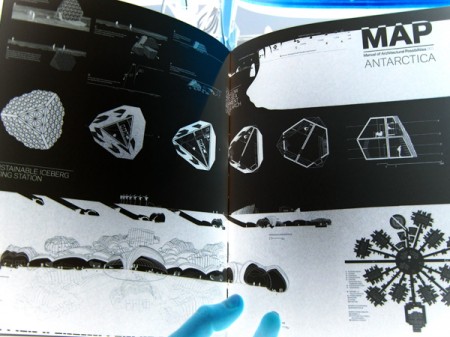
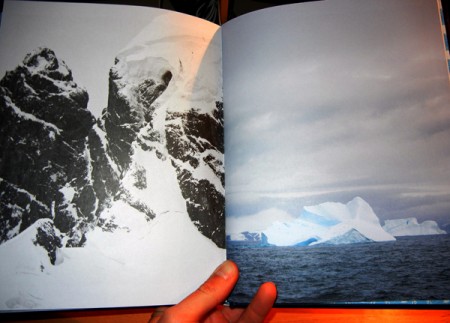
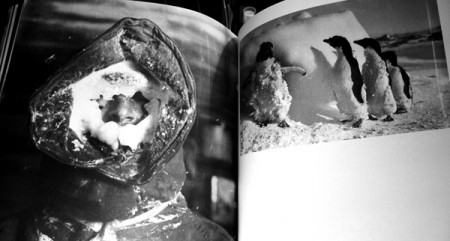
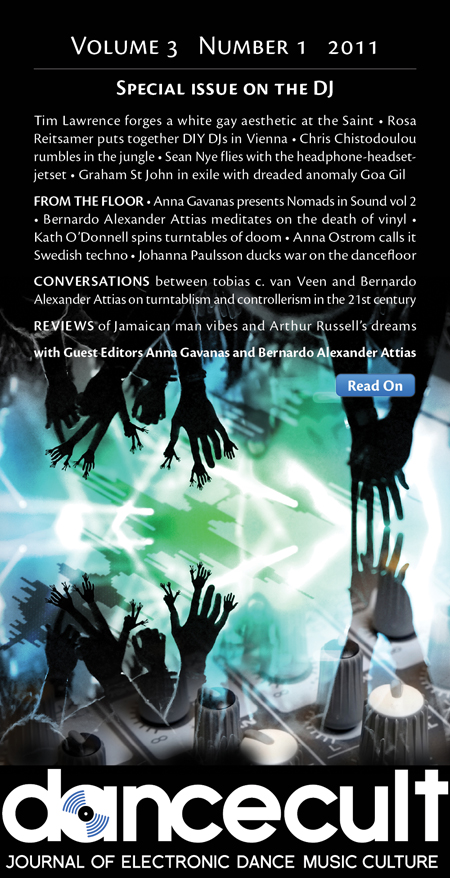
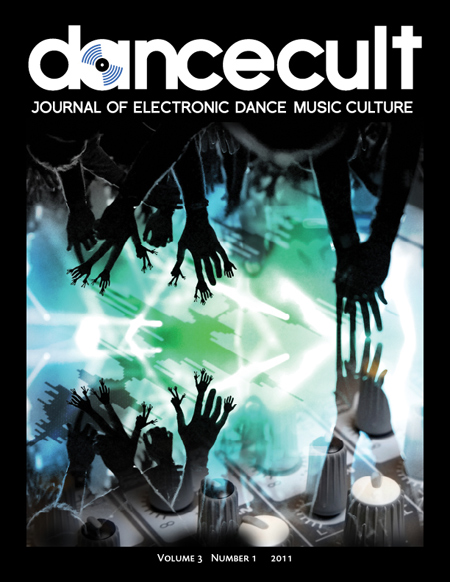








 RT
RT 